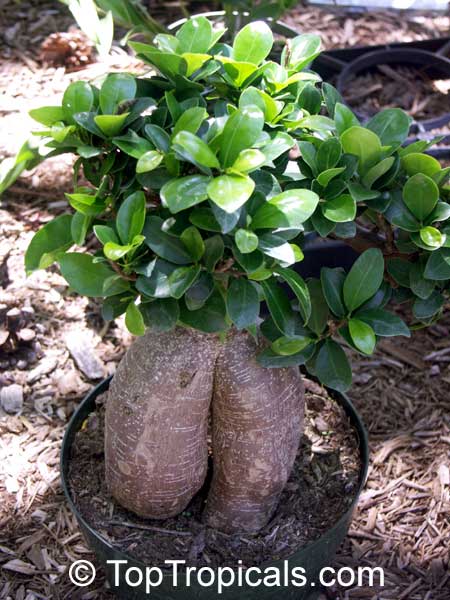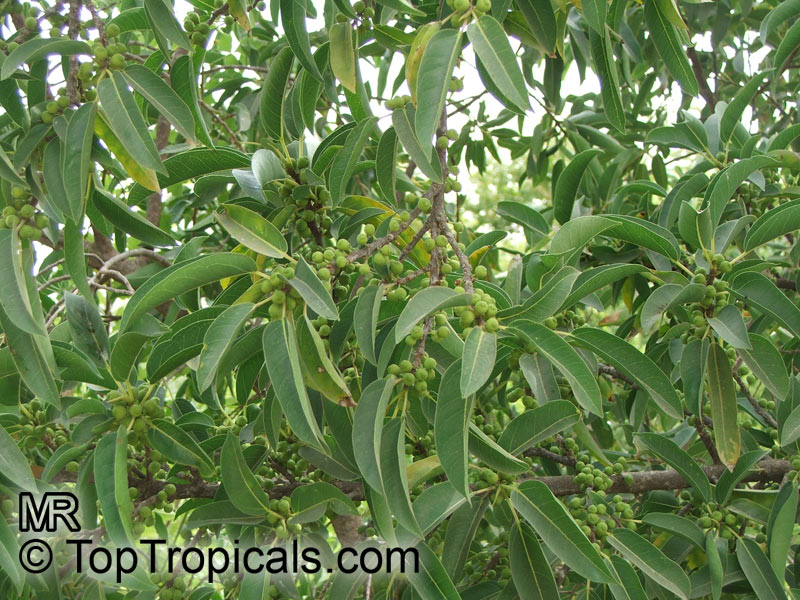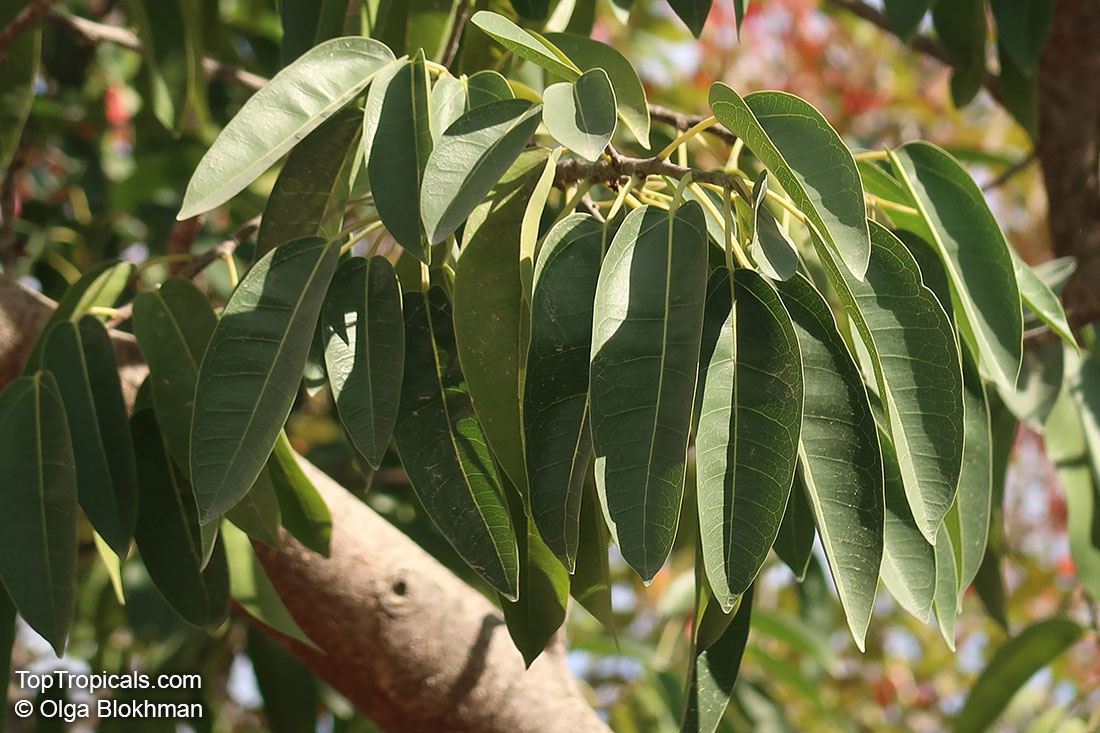Ficus cordata subsp. salicifolia (Willow-leafed fig)
Top Tropicals Plant Encyclopedia
Botanical name: Ficus cordata subsp. salicifolia
Common name: Willow-leafed fig
Family: Moraceae
Origin: Northern and Eastern South Africa






Ficus cordata subsp. salicifolia, more commonly known as the Willow-Leafed Fig, is a plant native to Northern and Eastern South Africa. Its pleasant appearance and ease of care have made it a popular choice for both outdoor and indoor gardens. The Willow-Leafed Fig has an attractive appearance, with its stems and branches covered in greyish-white bark and green, willow-like leaves. As it matures, the tree develops a striking caudex, or a thick root base.
Though it typically grows as a small tree reaching between 10-20 ft in height and width, it is occasionally trimed to keep it in shape or used as a bonsai. This makes it suitable for smaller gardens or to frame an entryway. These trees thrive in full sun, and require moderate water, being particularly resistant to dry spells. It can tolerate seaside conditions, making it a good choice for exposed and beachfront gardens, as it can tolerate salt air. In colder regions, this species can be potted and kept indoors or in a sunroom during the winter months to protect it from the cold.
Ficus cordata salicifolia is hardy in USDA zones 9-11. Plant the Willow-Leafed Fig in a location with access to plenty of sunshine, where the tree can spread out and enjoy full sun. Give it access to regular water, being careful not to over water it, which can lead to root rot. Be sure to allow the soil to properly dry between each session of watering. Provide the tree with a soil that drains quickly. The tree will benefit from occasional fertilizer, ideally applied in early spring. When pruning, be sure to use a pair of sharp secateurs to protect the fragile branches. For a bonsai, this species is ideal, particularly with elderly specimens whose caudex has developed well. In colder regions, the container-grown variety works best.
The Willow-Leafed Fig is a beautiful species, with a unique and eye-catching form. It's hardiness and resilience make it an ideal choice for a range of climates, and its ability to be used as a bonsai makes it an excellent choice for a variety of gardens and homes.
Similar plants: Ficus cordata subsp. salicifolia (Willow-leafed fig)
- Ficus abutilifolia (Large-leaved Rock Fig)
- Ficus altissima (Council Tree)
- Ficus aspera (Variegated Clown Fig)
- Ficus auriculata (Elephant ear fig tree)
- Ficus benghalensis (Banyan Tree)
- Ficus benjamina (Benjamin Fig)
- Ficus brusii (Highland breadfruit)
- Ficus capensis (Broom Cluster fig)
- Ficus carica (Fig Tree)
- Ficus citrifolia (Shortleaf Fig)


